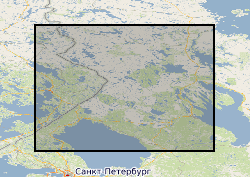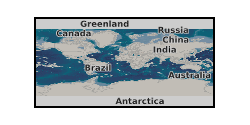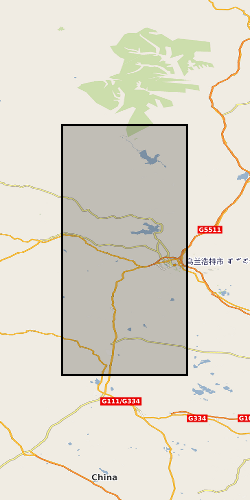Excel (xlsx)
Type of resources
Topics
Keywords
Contact for the resource
Provided by
Years
Formats
Representation types
Update frequencies
-

Cretaceous-Paleocene calcareous nannofossils from Site U1579 drilled on the Agulhas Plateau, Southwest Indian Ocean during International Ocean Discovery Program Expedition 392 Agulhas Plateau Cretaceous Climate in February-April 2022. The submitted files include data on Cretaceous-Paleogene (K-Pg) boundary calcareous nannofossil biostratigraphy and range chart, percentage assemblage counts and bulk carbon and oxygen isotopes from K-Pg sediment samples.
-

Demonstration of hydrothermal ammonium mobilization in the Paleoproterozoic with possible implications for biological productivity. The data include organic carbon and nitrogen abundances and isotopic ratios, as well as metal abundances. Samples span from sedimentary rocks to altered igneous rocks, where lithologies are provided in the CN data file. The N-enrichment in the usually N-poor igneous rocks indicates transfer of ammonium from organic-rich sediments and can be used to estimate the ammonium concentration of the hydrothermal fluid at the time of deposition. More details are provided in Stüeken, E.E., Kirsimäe, K., Lepland, A. and Prave, A.R., 2023, Astrobiology, 23(2), pp. 195-212.
-

The dataset consists of eleven spreadsheet tabs, each tab containing lipid biomarker palaeothermometry (air temperature reconstructions) and bulk organic carbon isotope data from individual lignites that are known to stratigraphically span the Cretaceous-Palaeogene (K-Pg) boundary. Uncalibrated, raw biomarker distributions (glycerol dialkyl glycerol tetraethers; GDGTs) are provided, as well as the calculated calibration outputs. Site coordinates are: West Bijou, Colorado (39°34'14'N, 104°18'09'W), Sussex, Wyoming (43°39'40"N, 106°19'06"W), Pyramid Butte, North Dakota (46°25'03'N, 103°58'33'W), Hell Creek Road, Montana (47°31'35"N, 106°56'23"W), Rock Creek West, Saskatchewan (49°02'20"N, 106°34'00"W), Wood Mountain Creek, Saskatchewan (49°25'20"N, 106°19'50"W), Frenchman Valley, Saskatchewan (49°20’56"N, 108°25’05"W), Knudesn’s Coulee, Alberta (51°54’27"N, 113°02’57"W) Griffith’s Farm, Alberta (51°54’47"N, 112°57’51"W), Coal Valley Cores (GSC CV-42-2, Cores 1 and 2), Alberta (53°05’02"N, 116°47’ 40"W) Police Island, Northwest Territories (64°52'42"N, 125°12'33"W).
-

Stable isotope data of organic carbon, nitrogen and sulfur as well as trace elements are used to explore how proxies with differing residence times in seawater respond to changes in the basin’s connectivity to the open ocean. The results show that species with a short residence time, such as nitrate and rare earth elements, may be more sensitive to geologically brief fluctuations in oceanographic conditions than long-lived species like sulfate. Details about the methodology and sampling strategy can be found in Stu¨eken, E.E., Viehmann, S. and Hohl, S.V., 2023, ACS Earth and Space Chemistry, 7(7), pp.1337-1349.
-

Whole rock analyses (presented in parts per million, ppm) of volcanic samples from Mt. St Helens, Washington, USA. Detailed sample descriptions and given in Blundy et al. (2008) and references therein. All samples were analysed using solution ICP-MS at the Open University. Blundy, J., Cashman, K.V. and Berlo, K. (2008) Evolving magma storage conditions beneath Mount St. Helens inferred from chemical variations in melt inclusions from the 1980-1986 and current (2004-2006) eruptions, in: Sherrod, D.R., Scott, W.E., Stauffer, P.H. (Eds.), A volcano rekindled: the renewed eruption of Mount St. Helens, 2004-2006, Reston, VA, pp. 755-790.
-

Anisotropy of magnetic susceptibility (AMS) data of sediment samples from IODP Site U1391 in the Southwest Iberian Margin. Data are organised in columns, including depth and estimated age of the sediment samples and the following AMS parameters: raw and orientation corrected K1 declination, AMS factors Pj, q, and T. More detailed information on the data is available at: https://doi.org/10.1029/2020PA003947.
-

Marine sediment core sediment and pore water fraction barium concentration and isotope data with associated error collected during the International Ocean Discovery Programme (IODP) expedition 391 at Walvis Ridge, offshore Namibia, collected November 2021 - February 2022. Latitude and Longitude of each specific sample is listed in the datafile. Samples were measured on the Thermal Ionising Mass Spectrometer at the University of Oxford and have been drift corrected between 1st January 2023 and 30th September 2024. They are the final, complete record of the data. The data has an external error of 0.03 per mil and is deemed reproducible. Ethan Petrou is responsible for collection and processing of the data and can be contacted. The data was collected to increase the number of barium isotope measurements in the modern oceans and would be useful for any modern oceanography or geochemist interested in redox or paleoproductivity.
-

The data set contains major, trace element, and stable isotope (Si, Zn, Mo, V, Tl, Zr) from previous studies and new nitrogen abundance and stable isotope values for 17 samples spanning a range of igneous rock types (basalt, andesite, dacite, rhyolite). The samples are apheric extrusive volcanic rocks from Hekla volcano, Iceland.
-

These data comprise geochemical results from upper Ediacaran organic-rich shales / mudstones from the Yangtze Craton (South China) from the Doushantuo Formation (member IV) and overlying lower Dengying Formation (= Miaohe Member). Ages range from about 570 to 550 Ma. The data consist of iron partitioning (Fe-speciation), phosphorus partitioning (P-speciation), bulk rock metal concentrations, total organic content and pyrite sulfur isotopes. Major and trace element concentrations of all samples were measured by inductively coupled plasma optical emission spectrometry and mass spectrometry, respectively, after quantitative HNO3-HFHClO4 digestion. Fe speciation was performed after the established methodology of Poulton and Canfield to extract operationally defined Fe phases, including Fe associated with carbonates (Fecarb), ferric oxides (Feox), magnetite (Femag), and pyrite (Fepy). The sum of these Fe pools constitutes the proportion of Fe that is considered highly reactive (FeHR) toward dissolved sulfide. Ratios of FeHR/FeT > 0.38 support FeHR enrichment and deposition under anoxic bottom water conditions, whereas values of <0.22 indicate deposition from oxic bottom waters. The intermediate range of 0.22 to 0.38 is regarded as equivocal because of the possibility for rapid sediment deposition or early diagenetic transformation of unsulfidized FeHR to poorly reactive sheet silicate minerals. For anoxic samples (FeHR/FeT > 0.38), the degree of sulfidation of the FeHR pool can be used to distinguish ferruginous (Fepy/FeHR <0.7) from euxinic (Fepy/FeHR > 0.8) conditions, with an intermediate zone ascribed to “possible euxinia”. Recent analyses of Holocene sapropels and the euxinic Lake Cadagno indicate that Fepy/FeHR > 0.6 may be a more suitable threshold for distinguishing ferruginous from possible euxinic conditions. Selected shale samples were analyzed for pyrite sulfur isotopes (δ34Spy), TOC, organic carbon isotopes (δ13Corg), and P phase associations. The P measurements use a sequential extraction method to distinguish the proportion of total P (PTot) associated with detrital apatite (Pdet) relative to potentially bioavailable and reactive (Preac) minerals, including Fe (oxyhydr)oxides (PFe),organic matter (Porg), and authigenic carbonate fluorapatite, biogenic apatite, and CaCO3-bound P (Pauth). For methods, see: S. W. Poulton, D. E. Canfield, Development of a sequential extraction procedure for iron: Implications for iron partitioning in continentally derived particulates. Chem. Geol. 214, 209–221 (2005). Fred T. Bowyer, Alexander J. Krause, Yafang Song, Kang-Jun Huang, Yong Fu, Bing Shen, Jin Li, Xiang-Kun Zhu, Michael A. Kipp, Lennart M. van Maldegem, Jochen J. Brocks, Graham A. Shields, Guillaume Le Hir, Benjamin J. W. Mills, and Simon W. Poulton Biological diversification linked to environmental stabilization following the Sturtian Snowball glaciation. Sci. Adv. 9 (34), eadf9999. DOI: 10.1126/sciadv.adf9999 (2023)
-

The data report new F, Cl, and Br fluid/melt partition coefficients for intermediate to silicic melts, for which F and Br data are particularly lacking; and for varying CO2-H2O contents. The data was collected from basaltic andesite and dacite rock experiments from the Kelud volcano in Indonesia and Quizapu volcano in Chile Over the period of two years, 2020 – 2022. The experiments were conducted at pressures 50–120 MPa, temperatures 800–1100 °C, and volatile compositions [molar XH2O = H2O/(H2O +CO2)] of 0.55 to 1, with redox conditions around the Nickel-Nickel Oxygen buffer (ƒO2 ≈ NNO). Experiments were not doped with Cl, Br, or F and were conducted on natural crystal-bearing volcanic products at conditions close to their respective pre-eruptive state. The data was collected to assess the effects of changing fluid composition (XH2O) on Br fluid/melt partitioning for the first time. Three tables of data are provided; Table 1.xlsx Table 1 Experimental conditions, which were conducted under NNO oxygen buffer. Table 3.xlsx Table 3: Major element and Br, Cl and F contents of experiments, modelled water and CO2 values and Fluid/melt partitioning. The standard deviation (1 sigma) of the multiple analyses for each experiment (n=11-24) Table S2 SIMS and EMPA Secondary standards.xlsx SIMS and EMPA secondary standards Associated paper; Mike Cassidy, Alexander A. Iveson, Madeleine C.S. Humphreys, Tamsin A. Mather, Christoph Helo, Jonathan M. Castro, Philipp Ruprecht, David M. Pyle, EIMF; Experimentally derived F, Cl, and Br fluid/melt partitioning of intermediate to silicic melts in shallow magmatic systems. American Mineralogist 2022;; 107 (10): 1825–1839. doi: https://doi.org/10.2138/am-2022-8109
 NERC Data Catalogue Service
NERC Data Catalogue Service